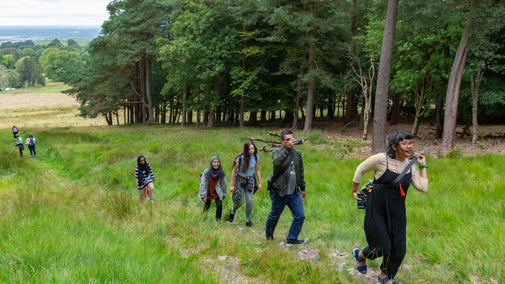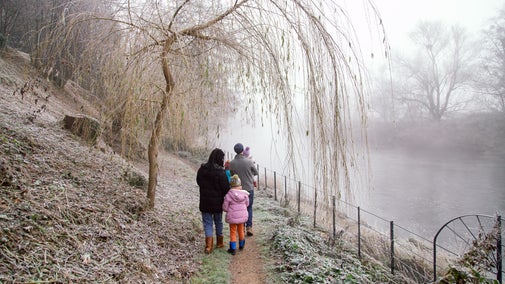West Wycombe ridges and bottoms walk
Oxfordshire, Buckinghamshire & Berkshire
Discover all the ups and downs of the valleys that carve their way through the Chiltern Hills on this challenging trail. This circular route is a chance to see how the Ice Age left its mark on the surrounding countryside and learn how humans first settled here. The trail also explores the dense woodland, farmland and villages that call these valleys home.
Near to
Chilterns CountrysideStart point
West Wycombe Hill car park, High Wycombe, HP14 3AH. Grid ref: SU827951Trail information
Bring a map
Most of the route isn't on Trust land. While the paths are generally well-maintained, some signs may be hard to find and some tracks may be overgrown. We recommend using your own Ordnance Survey map with these instructions.
More near here
Chiltern Hills three-in-one walk
Discover a challenging 8½-mile scenic walk linking three National Trust places in the Chiltern Hills: West Wycombe, Bradenham and Hughenden. Longer and shorter routes can be completed depending on your choice.

Bradenham beech woods walk
Enjoy a classic Chilterns landscape and find out more about the history of this part of the world on the Bradenham beech woods walk.

Exploring the Chiltern Escarpment
This 10 mile walk offers a range of panoramic views across the Chiltern Escarpment and the Aylesbury Vale. See a range of historical and archaeological sites, as well as the pretty village of Ellesborough and the prime minister's country retreat at Chequers.

Watlington Hill and the Wormsley Estate walk
This is a long and fairly challenging walk taking you around Watlington Hill, Pyrton Hill, Cowleaze Wood and the Wormsley Estate.

Get in touch
Chilterns Countryside, c/o Hughenden estate, High Wycombe, Buckinghamshire, HP14 4LA
Our partners

We’ve partnered with Cotswold Outdoor to help everyone make the most of their time outdoors in the places we care for.
You might also be interested in
Walking
Explore some of the finest landscapes in our care on coastal paths, accessible trails, woodland walks and everything in between. Find the best places to walk near you.

Walking in Oxfordshire, Buckinghamshire and Berkshire
From gentle strolls for little legs to longer hikes through the rolling Chiltern hills, these are some of the best walks in Oxfordshire, Buckinghamshire and Berkshire.

Cotswold Outdoor: our exclusive walking partner
Learn about the National Trust’s ongoing partnership with Cotswold Outdoor. Find out how they help us care for precious places and the exclusive discount available for National Trust supporters.

Staying safe at National Trust places
The special places in National Trust care sometimes come with a few risks for visitors, be it coastline or countryside. Find out how to keep safe throughout your visits.

Follow the Countryside Code
Help to look after National Trust places by observing a few simple guidelines during your visit and following the Countryside Code.

Things to see and do in the Chilterns Countryside
Discover the countryside sites of the Chilterns. Find the best viewpoints, walk through ancient woodland or pick a quiet spot to watch for wildlife.

Visiting Bradenham in the Chilterns Countryside
Discover scenic Bradenham. Look for wildlife and hidden archaeology in the ancient woodland or set out to explore the picturesque village.

History of the Chilterns Countryside
The countryside of the Chiltern Hills is steeped in history. Explore the past of some of our sites, from royal visits to ancient hillforts.

